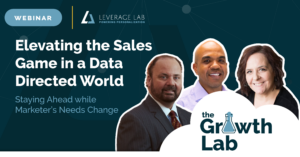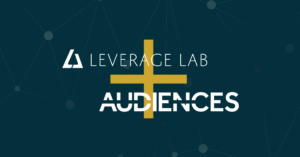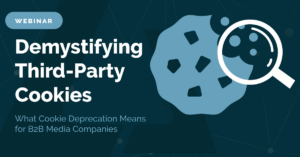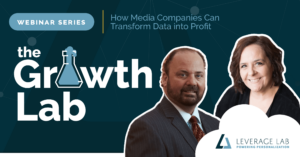There is a lot of confusion around how best for marketers to leverage their first-party data, especially when it comes to technology. In a recent study conducted by Merkle and MarTech reports that 44% of marketers place themselves at a “basic” level of audience management maturity, in spite of having invested in multiple tools to manage their data. So it seems a primer is in order to help differentiate data technologies and clear up some common misconceptions.
It might be helpful to begin by defining the various types of data categories:
First-party data: This is the most valuable type of data because first-party data is the information you yourself have collected through a direct relationship with your audience. It includes behaviors, actions or interests collected on your website or app. It can also include non-online information such as completed surveys, customer feedback, and other customer information stored in your CRM database.
Second-party data: Data collected by a partner, often referred to as publisher data. It comes from a source other than your own audience. It could include data from many of the same sources first party data comes from, such as website and app behaviors, social media, and customer surveys.
Third-party data: Third-party data is usually provided by companies, also known as data aggregators, that are not the original collectors. This includes data aggregators that pull it from various other platforms and websites where it was generated. These aggregators pay publishers and other data owners for their first-party data.
Misconception 1: A CRM is all a marketer needs.
CRMs are designed primarily as sales tools, while Customer Data Platforms (CDPs) are built with marketers in mind. By automatically centralizing data from your website, email system, point of sale, and more, you get a full picture of your users throughout the entire multi-touch buying journey. Even better, you can then use behavioral data to optimize campaign performance
The goal of a CDP is to manage and understand all customer data to make high-level business decisions. CDPs do this by gathering data from every customer touchpoint – everything from ads to website traffic, to points of transaction, to in-product user behavior – in one place. This data is then used to produce a single view of the customer through a process called identity resolution or authentication. Marketers can use this unified view of the customer to understand which tactics are effective or to personalize things like drip email campaign messaging. Sales can also leverage CDP data to run highly personalized account-based selling. Read More: CRM vs CDP
Misconception 2: CDPs, Data Warehouses, and Data Lakes do the same thing.
Data lakes and data warehouses are both widely used for storing big data, but they are not interchangeable terms. A data lake is comprised of raw data, the purpose for which is not yet defined. A data warehouse is a repository for structured, filtered data that has already been processed for a specific purpose.
Data Warehouse: A data warehouse is an environment that pulls together data from different sources for reporting and analysis purposes. The reports are often used to make business decisions. A data warehouse stores processed and refined data according to the business logic. This means that you need to prepare the data by cleansing, transforming, and aggregating it before using it for analytical purposes.
Data Lake: A data lake is a system that stores data in its raw format. Basically, you can store your data as-is, without having to first structure it. Data stored in the data lake can be in structured, semi-structured or unstructured format. You can import this data to your data warehouse for adding more business value to it, or you can use that data in dashboards and visualizations directly from the data lake. Beware that the direct visualization of data from the data lake can be risky, as data is not cleaned and it might contain corrupt or duplicate records, for example, that might affect the final figures quite a lot. By using a data lake you are building a strong data foundation for better decisions and a single source of truth.
Customer Data Platform: A CDP is a platform that creates a persistent, unified customer database that is accessible to other systems. It is a marketer’s tool that requires some technical expertise in setting up, but less than that of a typical data warehouse project. This reduces the time, cost, and risk and gives business users more control over the system, even though they may still need some technical assistance. The data is unified and structured by user profiles that through marketing executions can be moved from anonymous to known states.
Misconception 3: A CDP is the same as a DMP
A data management platform (DMP) is used when you want to build marketing campaigns for audiences that are unfamiliar with you. DMPs are best for this because of their use of third-party data. They can give you access to audiences that you don’t know. You can then use that new data to build a targeted marketing campaign.
CDPs are built for marketers to unify and normalize first and second-party data. If you plan to create highly personalized marketing campaigns based on your own data, use a CDP. Your CDP can gather website data and send it to any number of different tools, depending on your needs. Many CDPs can segment anonymous and known audiences.
Misconception 4: A CDP is strictly a marketer technology
A CDP is defined as a Marketer-managed system designed to collect customer data from all sources, normalize it, and build unique, unified profiles of each individual customer. That is not to say that only Marketers should manage and work with it.
Sure, marketers drive the implementation since they are the ones who have defined the use cases and will be responsible for proving the ROI. However, your IT team will want to be involved if only during partner selection and the initial implementation of the solution. That will ensure that major technical hiccups will be avoided or spotted early in the process.
Once it is implemented, your data scientists, database developers or analysts will want access to either fetch some data or implement a machine learning algorithm, supporting your marketing activities. Last but not least, the finance department might want to double-check how much was spent for a specific campaign on a specific channel since the invoice from the advertising vendor seems too high this month.
Misconception 5: CDPs are only for identity resolution and personally identifiable information (PII).
It’s true that CDPs unify multiple identifiers from various platforms and devices in real-time to enable people-based targeting, personalization and measurement by resolving ID. Core CDP functionality also supports engaging anonymous user profiles.
Misconception 6: Implementation is complicated and can take years.
Despite all the functionality that comes out of the box, implementation can be straightforward and quick. Leverage Lab regularly completes implementations in 6 to 8 weeks. The real effort comes if your data sources require custom integrations to port into your CDP. In our discovery process, we identify three types of data integrations, native integrations that the CDP has out of the box, custom integrations that have been solved for with previous client work, and net-new integrations that are designed from scratch. Other factors that impact the length of implementations include data health, is your taxonomy solid and consistent, and proprietary use cases.
Misconception 7: CDPs are all the same.
No surprise that this is not true. The CDP institute classifies CDP functionality into four areas; data, analytics, campaigns, and delivery. Some platforms focus on 1 to 2 of these areas while others attempt to support the full spectrum. Leverage Lab’s process identifies key functionality through a detailed discovery of key use cases and recommends platform partners that best fit the marketer’s needs.















